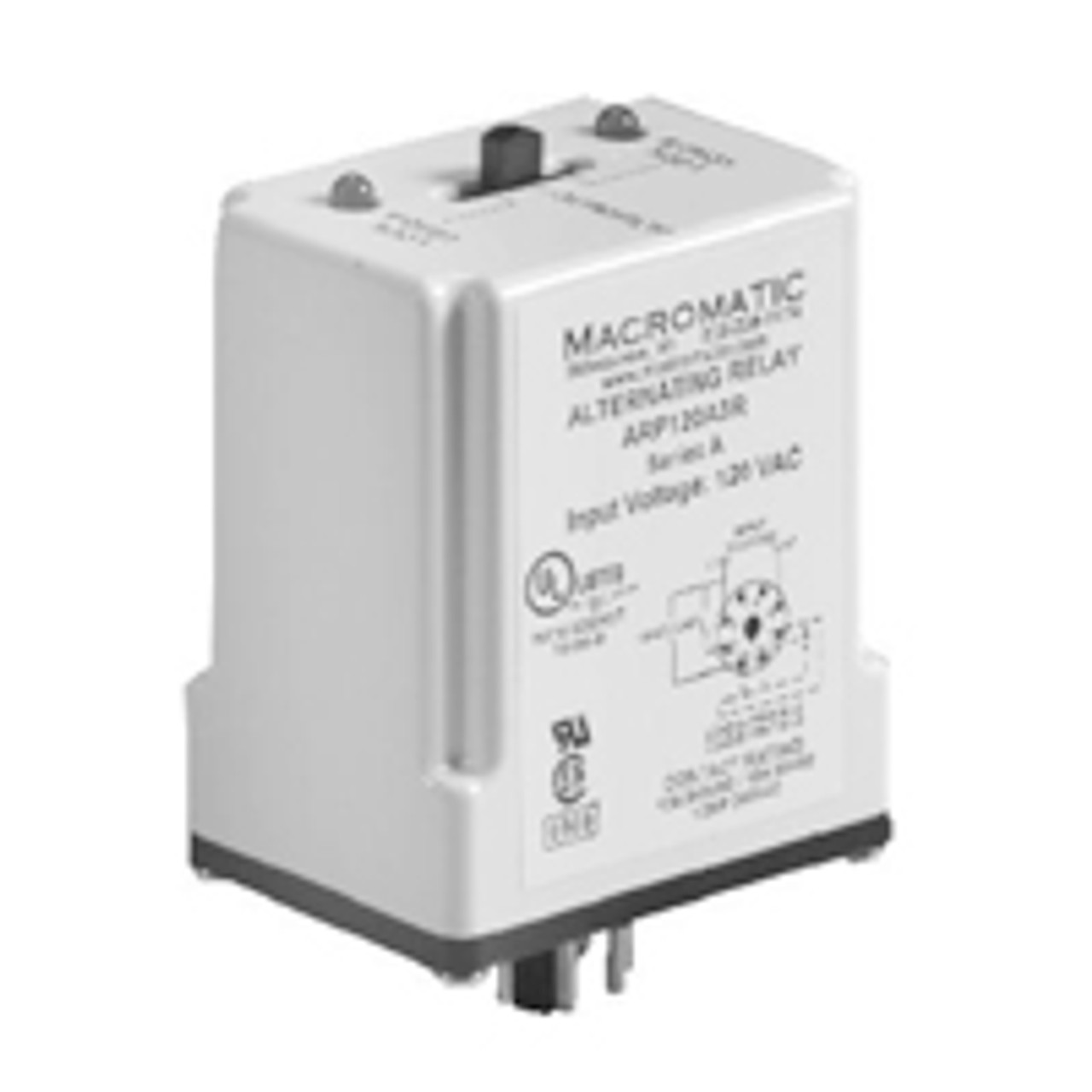Series Description: Alternating Relays with DPDT cross-wired outputs are used in applications requiring both (a) the optimization of load usage by equalizing the run time of two loads and (b) additional capacity in case of excess load require- ments. This alternating action is initiated by a control switch, such as a float switch, manual switch, timing relay, pressure switch, or other isolated contact. Each time the initiating switch is opened, the output relay con- tacts will change state, thus alternating the two loads. Two LEDs indicate which load will energize first.
Alternating Relays with DPDT cross-wired output configurations are typi- cally used to control two loads when the need to have both loads on at the same time for additional capacity is required.
An optional three position selector switch is offered. This allows a DPDT cross-wired unit to alternate the two loads as normal, or lock the relay to always operate the same load first each time. A load that has fewer hours of operation than the other load could be used more often to eventually balance the run time of both loads. |



 RoHS Compliant
RoHS Compliant